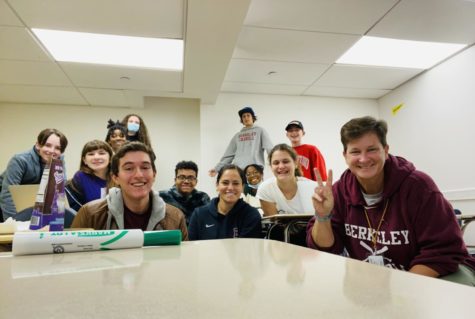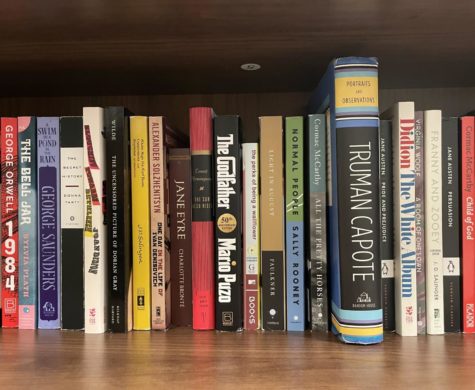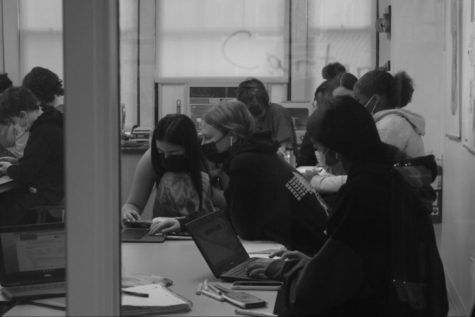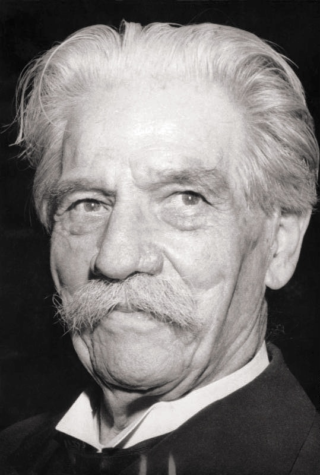Does Berkeley Carroll Need a White Ally Group?

On November 7, an email was sent out to the BC Upper School Community with the subject line “Possible New Affinity Group.” The email explained that the school had been discussing the possible creation of an affinity group for white students “specifically designed to establish a safe space where white students can engage in discussion items related to diversity, inclusion and privilege.” The email went on to say that like the other affinity groups such as P.O.C. (People of Color) and JADA (Joint Alliance for Diversity Awareness), the white affinity group’s “purpose will be to discuss important and uncomfortable topics with candor.” The email explained that the goal would be that “by the end of the year, students will gain comfort in participating in larger discussions pertaining to race, culture, socioeconomic class and other social identifiers.”
The email generated large amounts of discussion and controversy within the Upper School. Some questions were logistical. For example, many students asked what the purpose of this new affinity group would be in relation to the newly-created JADA, a group where students of all races could come together and discuss topics of diversity and inclusion. But many reactions to the email transcended the logistical, questioning the purpose of the affinity group all together. During a discussion on the affinity group in a senior history class, one student said, “But why exactly do we need a white affinity group? The whole world is a white affinity group!”
A week and a half after the first email was sent out, Brandie Melendez, Berkeley Carroll’s new Director of Community and Inclusion, sent out a follow-up. She started by saying, “The suggestion of forming a group that would be made up of white students sometimes focusing on race caught some members of the community by surprise. We regret that we were not more clear in our intentions.” She went on to describe the purpose of the group, explaining that “the creation of a group, commonly referred to as an ally group, was meant to be a first step in helping students navigate some important issues,” clarifying that “allies are individuals who make a commitment and effort to recognize privilege (based on gender, class, race, sexual identity, etc.) and work in solidarity to address matters of diversity and injustice.”
In an interview, Ms. Melendez began by clarifying the distinction between JADA and the proposed ally group, one of the logistical questions students had. She explained that currently, JADA and P.O.C. meet on alternating Cocurricular periods, and that in her vision, “a group like this could meet when P.O.C. is meeting and we could develop a curriculum [in JADA] so that each group could meet separately and then discuss together.” She explained that ultimately the purpose wasn’t just to allow white students to have a space to discuss matters of diversity, race, and privilege. Rather, JADA would begin the conversations that largely “aren’t happening today,” and the proposed ally group would act as a space where those discussions could continue.
But for some the question remains—why do we need a specifically white ally group when we have groups like JADA? The answer is simple. Many white students are not participating in conversations about race. In the last JADA meeting, “only three or four white students attended,” says one of the student leaders of the group. “Very few white students have joined JADA,” Ms. Melendez said. “And the question is, why?” One answer that comes to mind is the fear of saying the wrong thing or being perceived as racist. Another answer could be that white students simply do not feel the conversations are relevant to them, or, in the words of Ms. Melendez, that the “discussions are being perceived as being for someone else to talk about.”
When asked what her views on the white affinity group were, Lucy Shenk, a senior, answered: “At first I thought: ‘why do we need an especially white affinity group when white people are the large majority at BC?’, but after talking about it in history class, I understand that it’s important to have a place where white people also feel comfortable talking about race. Because often it’s the case that white people feel like they don’t have a place to talk about race because sometimes it seems like white people don’t have a race.” Lucy explained further, “I think white people need to feel more comfortable knowing that they can have an opinion and participate in conversation about diversity and race.”
Another thing that’s important to note is that on the whole, it’s not that white students don’t believe that conversations about race are important, and that institutionalized racism is a serious issue faced by our country today—it’s just that there’s some sort of disconnect. “I think when you have things like Ferguson, in the classroom white students definitely speak up, but then you have JADA, which was created so that everyone could come to an affinity group, and I don’t see any white students there,” one student, who wished to remain anonymous, explained. In Elizabeth Denevi and Nicholas Pastan’s article entitled “Helping Whites Develop Anti-Racist Identities: Overcoming Their Resistance to Fighting Racism,” they explain that white people who feel this way “have intellectualized the problem, but failed to really connect with racism as something that impacts them: the work is still about other people.” Another problem put forth in this article is the idea that white people don’t generally self-identify as part of a distinct racial group. “Whites are good at identifying themselves as individuals, [but] they struggle to see themselves as members of a group, and this point is key to understanding the persistence of racism.”
Essentially, the problem is this: white people don’t see themselves as a racial group because they have never been forced by society to acknowledge their own racial identity, and therefore they often feel that conversations about race aren’t directly pertinent to them. Of course, this is not true of everyone. There are white allies who have realized that everyone’s voices are important if issues of race in America and the world are truly to be addressed, and have put serious effort into becoming “emotion[ally] connect[ed]” (in the words of Deveni and Pastan) with issues of racism. But they are too few and too far between.
According to Ms. Melendez, this is why we should explore the idea of a white ally group. “White students don’t have enough tools and practice in discussing these really challenging topics, especially as it pertains to their identity as being white people in the discussion,” she explains. She believes that a new ally group, with help from trained faculty advisors and student leaders who are knowledgeable about diversity, race, and privilege could help provide these tools.
Students at BC have questions about this, though. Many still question why a white affinity group would be more effective than JADA. “I feel like JADA is a lot more inclusive than a white affinity group, especially when talking about issues of diversity,” says senior Kennedy Austin. “It makes sense for P.O.C. to exist, especially because people of color are a minority and this is a place where they get to have their voices heard. I feel like it’s kind of defeating the purpose of diversity if you give the majority a place to just speak about what they want and know.” Kennedy questioned how white privilege can be discussed in a space that’s solely white people, asking, “How do you talk about white privilege with people who don’t recognize it?” Senior Will Bellamy echoed this sentiment, explaining that “the whole problem with white privilege is that you don’t know you’re so privileged, so I think that it would be hard for everybody to figure that out without knowing what it’s like to not be privileged.” The one question that students who were interviewed agreed upon was that white students at BC are not participating enough in diversity initiatives related to race. Although, interestingly, another student who wished to remain anonymous thinks that “white students participate in conversations about diversity when it’s not about race or socioeconomic status, for instance, things like sexual orientation or gender.”
One thing that is important to note, which Ms. Melendez emphasized in her email, is that this isn’t just an idea that Berkeley Carroll has had. Ms. Melendez explained that “ally groups, working in tandem with other groups, have become a recommended best practice for diversity educators and practitioners.” She cited two articles which further discussed this (the topic has also been discussed in more depth in educator’s publications like these.)
In Ms. Melendez’s opinion, the goal is asking the question: “Do we as a community need to do more to give white students the tools to be part of these conversations?” Looking around us, it’s clear that we’re far from living in a society where race has no impact. Racism is still a pressing issue today, and so the bigger question is, how can every one of us become more aware of why discussions about race are essential for us all?









